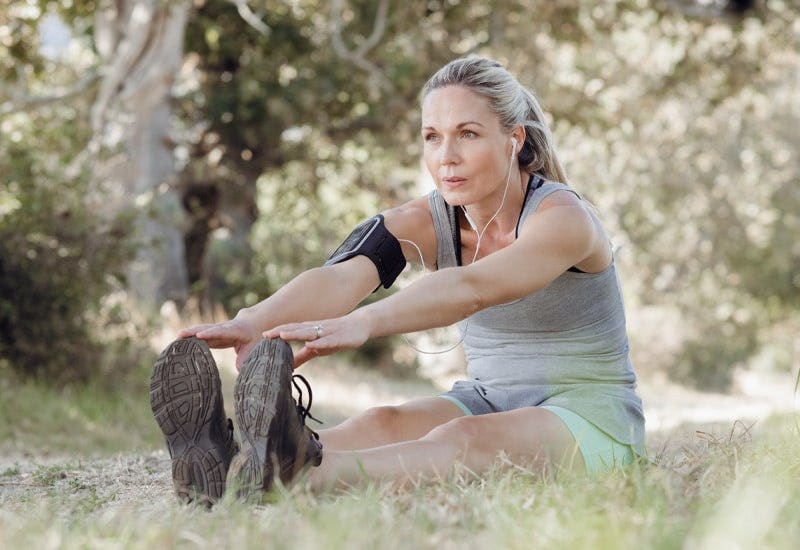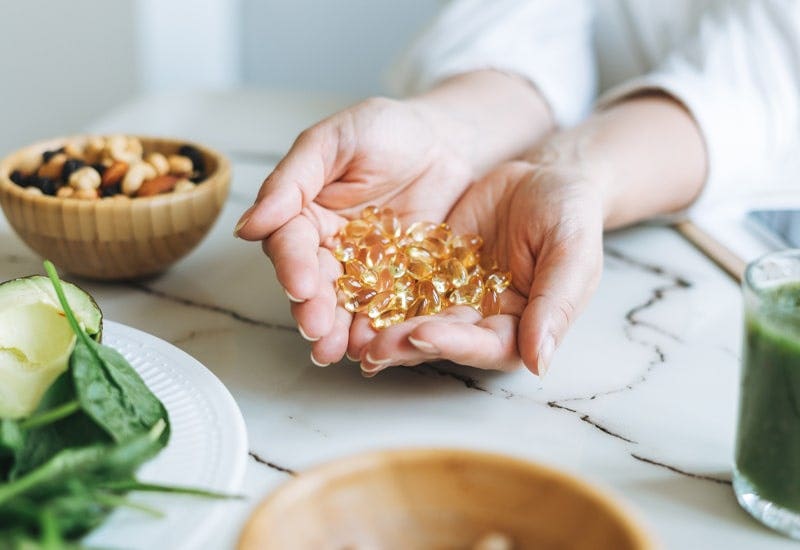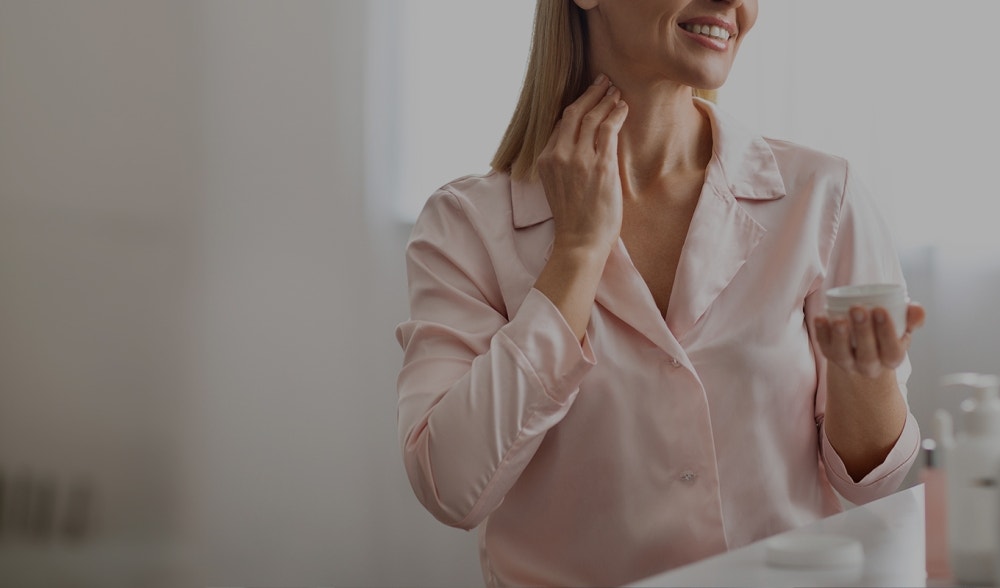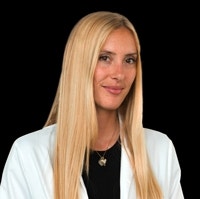What's the secret of youth?
The answer for us is very simple: being able to fully experience every moment of life. And how to fully live each day? Taking care of health, because the way we live really makes a difference.
In fact, the great challenge of medicine in our times is to make life expectancy coincide with active life expectancy, i.e. allow us to live long and healthy lives at the same time , preventing the pathologies that characterize old age and that do not allow us to " act ", to carry out all the fundamental activities for man connected to the general conditions of existence and to the maintenance of physical and cognitive functions.
We must therefore pay attention to the quality of our aging (both internal and external).
When we talk about skin aging , we mean a complex biological process resulting from two synergistic mechanisms: intrinsic and extrinsic factors. On the one hand, intrinsic or endogenous aging is an inevitable phenomenon that includes several factors, such as cellular metabolism, genetics, hormones and the passage of time: this type of aging is the one clinically associated with greater bone fragility and tissues and loss of elasticity. On the other hand, extrinsic agingor exogenous can be avoided, and is caused by repetitive exposure of the skin or body to harmful agents, especially UV light (photo-aging), an inappropriate and unregulated diet, pollution, chemicals and toxins [ 1,2].
It has been demonstrated that various ingredients of natural origin are potentially effective in reducing the signs of skin ageing, preventing skin problems and the onset of disorders and pathologies (3,4,5).
In this article we will see how taking nutraceuticals in the preventive field can really be the key to achieving successful aging .
What actually happens as we get older
At the basis of the aging of all our cells we find 3 natural and physiological mechanisms, which every day our body puts in place to function optimally.
I am:
- Inflammation – a defense mechanism of the body that is activated in the presence of tissue damage of various kinds;
- Oxidation – the effect of free radicals on molecules, which is counteracted by the presence of antioxidant substances;
- Glycation – a binding reaction between sugars and Protein, which causes an alteration of the functionality of the protein itself.
These processes, when present in the right quantities, have positive effects on our lives: over the years, however, the balance that characterizes them changes, leading to an imbalance which consequently causes damage and acceleration of the aging processes.
Acting on our lifestyle, with an integrated approach between diet, training and supplementation, can slow down these mechanisms, allowing us to enjoy the time that passes in health (and why not, visually more beautiful!).
Why Integration Makes a Difference (Long Term)
In the world we live in it is unfortunately easy to be exposed to micronutrient deficiencies. The foods we consume every day, often ultra-processed, are in fact rich in calories but poor in nutrients. This does not mean that we will notice any difference immediately: not having scurvy does not mean having optimal vitamin C intakes .
True deficiency diseases no longer exist (except in some areas of the world), but this does not automatically lead to full health. Indeed, we tend to associate health with the absence of disease, but the reality is that it is something more .
A sense of psycho-physical well-being , which can only be achieved if you feed yourself in an optimal way, increasing life expectancy but above all the quality of life.
Nutraceuticals for successful ageing
After introducing the concepts of preventive medicine and slow-aging, we know that offering our body everything it needs is optimal for it to function at its best and improve the quality of life by slowing down the aging process.
Let's see together a list of the most useful supplements to achieve successful aging.
Omega-3 – Omega-3 fatty acids are necessary for the body to function properly and perform a protective function : they protect the heart, the brain and regulate heart pressure. Several studies have also shown that they fight the inflammatory mechanisms underlying diseases, including autoimmune ones. They are essential for counteracting ageing, because they act by slowing down the shortening of telomeres, the protective "caps" on our chromosomes which shorten with each cell division. They also reduce oxidative stress caused by an excess of free radicals, fighting inflammation.
Turmeric – A spice widely used in cooking, Turmeric extract is known for being a powerful anti-inflammatory and for its antioxidant action. It seems to protect the brain in particular from aging and strengthen the immune system, and these positive effects are attributable to the presence of curcuminoids, bioactive compounds that make up the pigment extracted from turmeric.
Vitamin C – Ascorbic acid, another name by which vitamin C is called, is an essential nutrient for tissue repair, and in addition to supporting the functionality of the immune system, it is a powerful antioxidant, counteracts the formation of free radicals and actively participates in the biosynthesis of collagen molecules, responsible for the beauty of the skin and the elasticity of the tissues.
Vitamin A – Vitamin A helps form and maintain healthy skin, teeth, skeleton and membranes in our body. It is known as retinol because it produces pigments in the retina of the eye, promoting healthy vision, as well as being necessary for reproduction and lactation. It also nourishes the hair and delays its aging.
B vitamins – All B vitamins are essential for turning food into energy. Many have an antioxidant role, reducing cellular damage and aging. Vitamin B1 is required for proper nerve impulse function; B6 plays an important role in brain development and hemoglobin formation; folic acid (B9) is used for the construction of red blood cells and prevents damage to the nervous system during embryonic life. Even a low level of vitamin B12 has been associated with the acceleration of aging processes, demonstrating a protective effect.
Vitamin D – Vitamin D deficiency is responsible for bone fragility, because vitamin D promotes calcium absorption and regulates the amount of phosphate in the body. These actions are essential for having strong and healthy bones, preventing the risk of bone fractures. It also enhances the activity of the immune system, protecting us from external attacks by viruses and bacteria.
Vitamin E – It acts in our body as a powerful antioxidant, protecting us from the effects of pollution, smoke, incorrect diet, factors that tend to increase oxidative stress. In particular, vitamin E protects cell membranes and prevents various degenerative diseases.
Alpha lipoic acid – It is a powerful antioxidant, useful for reducing oxidative stress because it supports the activity of vitamins C, A and E. Its action also counteracts the glycation process, the reaction by which sugars bind to Protein, forming compounds harmful to health and aging. It also works by improving insulin sensitivity, reducing the occurrence of type 2 diabetes.
CoenzymeQ10 – Supports energy production and has an antioxidant action. It stimulates the immune system and contributes to the protection of our organs, including the brain, from oxidative stress, slowing down ageing.
Collagen – The intake of bioactive hydrolysed collagen peptides improves the appearance of skin, hair and connective tissues and stimulates the body to biosynthesise new collagen. It guarantees brightness, hydration and elasticity of the skin, as well as reducing the depth of wrinkles and signs of aging.
Hyaluronic Acid – Taken orally and not just as a topical cream, hyaluronic acid nourishes the connective tissue from within. It has a moisturizing and lubricating action on the skin and joints, fills the skin, making it firm and bright and protects the cartilage, reducing joint discomfort.
Although each organ ages at different speeds, if we take care of ourselves from an early age by combining lifestyle, nutrition, training and integration, we can live better (and longer).
Prevention starts with awareness, as does change.
Federica Federici & Massimiliano Febbi
Bibliography
Gilchrest B.A. Age-associated changes in the skin. J. Am. Geriatr. Soc. 1982;30:139–143. doi: 10.1111/j.1532-5415.1982.tb01289.x.
Cevenini E., Invidia L., Lescai F., Salvioli S., Tieri P., Castellani G., Franceschi C. Human models of aging and longevity. Expert Opinion. Biol. Ther. 2008;8:1393–1405. doi: 10.1517/14712598.8.9.1393.
Segger D., Schonlau F. Supplementation with Evelle improves skin smoothness and elasticity in a double-blind, placebo-controlled study with 62 women. J. Dermatol. Treat. 2004;15:222–226. doi: 10.1080/09546630410033772.
Ni Z., Mu Y., Gulati O. Treatment of melasma with pycnogenol. Phytother. Res. 2002;16:567–571. doi: 10.1002/ptr.1085.
Losada-Echeberria M., Herranz-Lopez M., Micol V., Barrajon-Catalan E. Polyphenols as promising drugs against main breast cancer signatures. Antioxidants (Basel) 2017;6 doi: 10.3390/antiox6040088.
Finch CE, Tanzi RE. Genetics of ageing. Science. 1997; 278: 407-11.
Rowe JW, Kahn RL. Human Aging: usual and successfull. Science. 1987; 237: 143-9.
Manolagas SC. From estrogen-centric to aging and oxidativestress: a revised perspective of the pathogenesis of osteoporosis. Endocr Rev. 2010; 31: 266-300.
Iwamoto J, Takeda T, Ichimura S. Effect of combined administration of vitamin D3 and vitamin K2 on bone mineral density of the lumbar spine in postmenopausal women with osteoporosis. J Orthop Sci. 2000; 5: 546-51.
Salari P, Rezaie A, Larijani B, Abdollahi M. A systematic review of the impact of n-3 fatty acids in bone health and osteoporosis. Med Sci Monit. 2008; 14: 37-44.
Alamdari N, O’Neal P, Hasselgren PO. Curcumin and muscle wasting-a new role for an old drug? Nutrition. 2009; 2: 125-9



Comments
Write a comment about the article